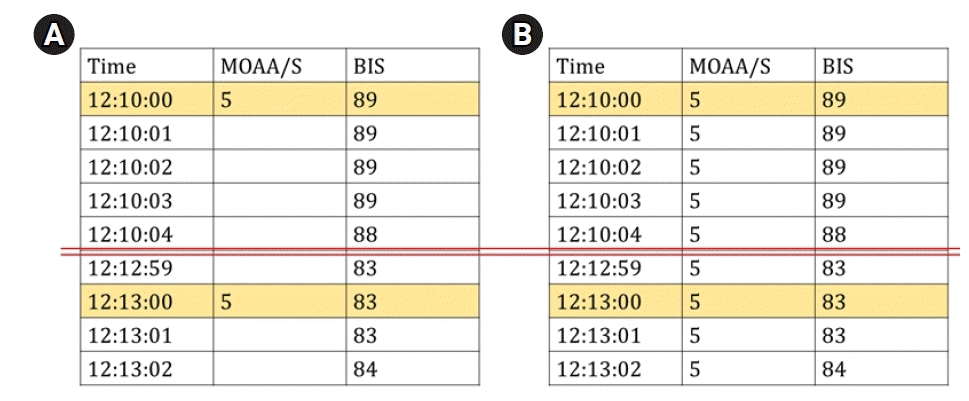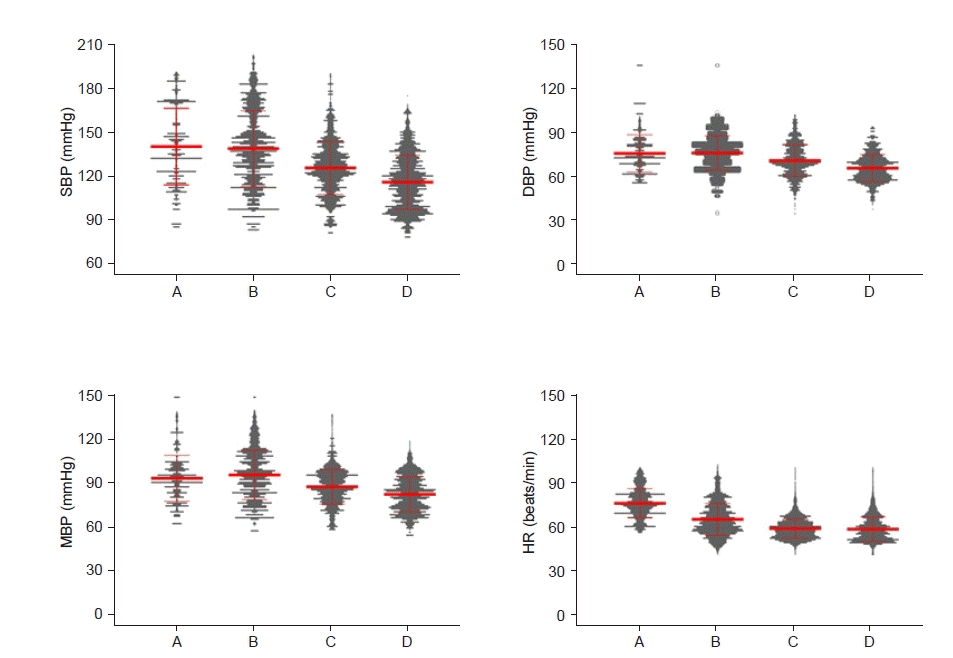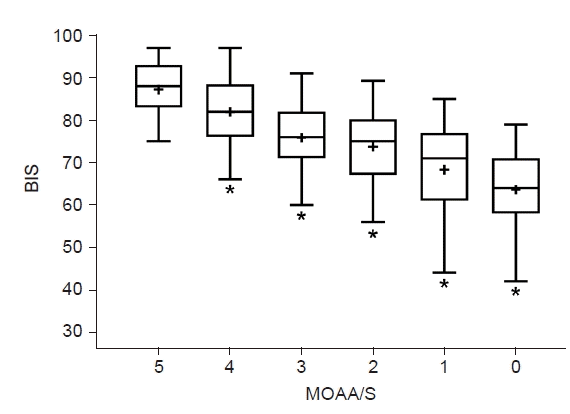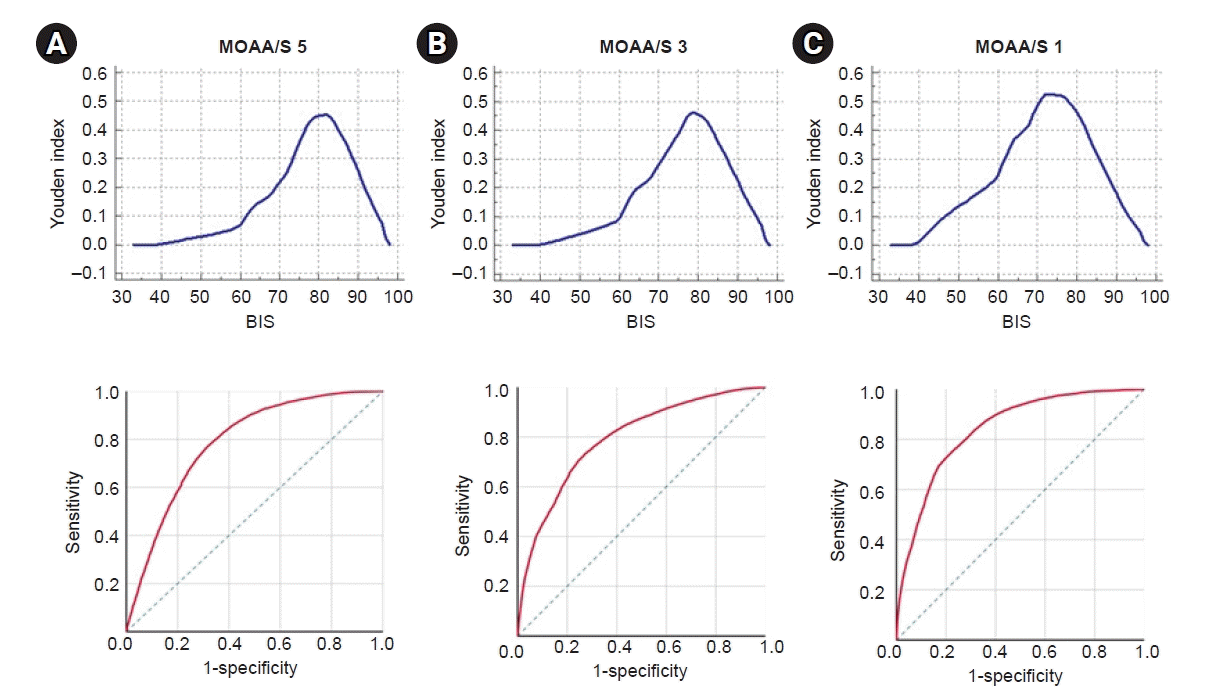1. Lee S. Dexmedetomidine: present and future directions. Korean J Anesthesiol. 2019; 72:323–30.
2. Mahmoud M, Mason KP. Dexmedetomidine: review, update, and future considerations of paediatric perioperative and periprocedural applications and limitations. Br J Anaesth. 2015; 115:171–82.
3. Mannion S, Lee P. Bispectral index, sedation, spinal anesthesia and mortality: time to put the jigsaw puzzle together? Anesth Analg. 2014; 118:906–8.
4. Sieber FE, Zakriya KJ, Gottschalk A, Blute MR, Lee HB, Rosenberg PB, et al. Sedation depth during spinal anesthesia and the development of postoperative delirium in elderly patients undergoing hip fracture repair. Mayo Clin Proc. 2010; 85:18–26.
5. Leslie K, Short TG. Sedation depth and mortality: a large randomized trial is required. Anesth Analg. 2014; 118:903–5.
6. Schneider G, Sebel PS. Monitoring depth of anaesthesia. Eur J Anaesthesiol Suppl. 1997; 15:21–8.
7. Glass PS, Bloom M, Kearse L, Rosow C, Sebel P, Manberg P. Bispectral analysis measures sedation and memory effects of propofol, midazolam, isoflurane, and alfentanil in healthy volunteers. Anesthesiology. 1997; 86:836–47.
8. Chan MT, Gin T. What does the bispectral EEG index monitor? Eur J Anaesthesiol. 2000; 17:146–8.
9. Johansen JW. Update on bispectral index monitoring. Best Pract Res Clin Anaesthesiol. 2006; 20:81–99.
10. Xi C, Sun S, Pan C, Ji F, Cui X, Li T. Different effects of propofol and dexmedetomidine sedation on electroencephalogram patterns: wakefulness, moderate sedation, deep sedation and recovery. PLoS One. 2018; 13:e0199120.
11. Lee HC, Jung CW. Vital recorder-a free research tool for automatic recording of high-resolution time-synchronised physiological data from multiple anaesthesia devices. Sci Rep. 2018; 8:1527.
12. Rampil IJ. A primer for EEG signal processing in anesthesia. Anesthesiology. 1998; 89:980–1002.
13. Afshani N. Clinical application of dexmedetomidine. S Afr J Anaesthesiol Analg. 2010; 16:50–6.
14. Wagner DS, Brummett CM. Dexmedetomidine: as safe as safe can be. Semin Anesth Perioper Med Pain. 2006; 25:77–83.
15. MacDonald E, Kobilka BK, Scheinin M. Gene targeting--homing in on alpha 2-adrenoceptor-subtype function. Trends Pharmacol Sci. 1997; 18:211–9.
16. Paliwal B, Rai P, Kamal M, Singariya G, Singhal M, Gupta P, et al. Comparison between dexmedetomidine and propofol with validation of bispectral index for sedation in mechanically ventilated intensive care patients. J Clin Diagn Res. 2015; 9:UC01–5.
17. Kim KM, Seo KH, Lee JM, Park EY, Park J. Target-controlled infusion of dexmedetomidine effect-site concentration for sedation in patients undergoing spinal anaesthesia. J Clin Pharm Ther. 2020; 45:347–53.
18. Turkmen A, Altan A, Turgut N, Vatansever S, Gokkaya S. The correlation between the Richmond agitation-sedation scale and bispectral index during dexmedetomidine sedation. Eur J Anaesthesiol. 2006; 23:300–4.
19. Zheng J, Gao Y, Xu X, Kang K, Liu H, Wang H, et al. Correlation of bispectral index and Richmond agitation sedation scale for evaluating sedation depth: a retrospective study. J Thorac Dis. 2018; 10:190–5.
20. Kasuya Y, Govinda R, Rauch S, Mascha EJ, Sessler DI, Turan A. The correlation between bispectral index and observational sedation scale in volunteers sedated with dexmedetomidine and propofol. Anesth Analg. 2009; 109:1811–5.
21. Lim TW, Choi YH, Kim JY, Choi JB, Lee SK, Youn EJ, et al. Efficacy of the bispectral index and Observer's Assessment of Alertness/Sedation Scale in monitoring sedation during spinal anesthesia: a randomized clinical trial. J Int Med Res. 2020; 48:300060519893165.
22. Hall JE, Uhrich TD, Barney JA, Arain SR, Ebert TJ. Sedative, amnestic, and analgesic properties of small-dose dexmedetomidine infusions. Anesth Analg. 2000; 90:699–705.
23. Scheinin A, Kallionpää RE, Li D, Kallioinen M, Kaisti K, Långsjö J, et al. Differentiating drug-related and state-related effects of dexmedetomidine and propofol on the electroencephalogram. Anesthesiology. 2018; 129:22–36.
24. Colin PJ, Hannivoort LN, Eleveld DJ, Reyntjens KMEM, Absalom AR, Vereecke HEM, et al. Dexmedetomidine pharmacokinetic-pharmacodynamic modelling in healthy volunteers: 1. Influence of arousal on bispectral index and sedation. Br J Anaesth. 2017; 119:200–10.
25. Colin PJ, Hannivoort LN, Eleveld DJ, Reyntjens KMEM, Absalom AR, Vereecke HEM, et al. Dexmedetomidine pharmacodynamics in healthy volunteers: 2. Haemodynamic profile. Br J Anaesth. 2017; 119:211–20.








 PDF
PDF Citation
Citation Print
Print



 XML Download
XML Download